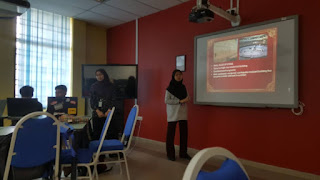BASIC ELEMENT OF CHINESE ARCHITECTURE
Second presentation
BASIC ELEMENT OF CHINESE ARCHITECTURE
The presenter is;
- IFFAH DIYANA
- FATIN IZATY
- SASYA ALYA
1. WALLS
The common use of curtain walls or door panels to delineate rooms or enclose a building, with the general de-emphasis of load-bearing walls in most higher class construction.
However, with the reduction in availability of trees in the later dynasties for building structures, the use of load-bearing walls in non-governmental or religious construction increased, with brick and stone being commonly used.
- THE FORBIDEN CITY and THE GREAT WALL OF CHINA
- Made of brick.
- These walls served as both defensive walls and retaining walls for the palace
- WALL MADE OF STONE
- Tulou is a residential building.
- Constructed of cut granite or had substantial walls of fired brick.
- Well-ventilated, windproof, earthquake resistant building that is warm in winter and cool in summer.
- These walls served as both defensive walls and retaining walls.
- Made of rammed earth such as CLAY
- Usually made as house for the poor.
- Rammed earth walls could last for many years.
2. OPENING
ORIENTATION
Opening are usually facing the south to allow the maximum exposure of the building windows and walls to the sun while keeping the cold northern winds out. Generally windowless back of the structure faces the north, where the wind is coldest in the winter.
ORIENTATION
Opening are usually facing the south to allow the maximum exposure of the building windows and walls to the sun while keeping the cold northern winds out. Generally windowless back of the structure faces the north, where the wind is coldest in the winter.
- This gate is called a “doumon” gate in Chinese which mean the “entrance to a cavern” (chinese gardern)
- The purpose of “doumon” is as a passage that connect a separate space.
- There is as much variation in them, with some taking the shape of pots or leaves, but by far the most common is the spherical gate.
- Windows with these patterns are called “LEAKING WINDOW” or “FLOWER WINDOW”
- To allow the observer to see the garden space through the open spaces within the pattern.
- To the Chinese, window is not only for lighting and ventilating, it is a picture frame of sorts, with the garden always positioned outside the window.
- The main entrance in Chinese palace or courtyard house.
- Usually emphasis on articulation and bilateral symmetry, which signifies balance.
- On the top of the gate of the main entrance hangs a tablet with words (name of the place).
- The entrance is constructed by placing wooden pillars onto stone bases, which are bound together with wooden beams. Some of it was also made of stone or bricks.
3. ROOF
Flat roofs are uncommon while gabled roofs are almost omnipresent in traditional Chinese architecture. Roofs are either built on roof cross-beams or rest directly on vertical structural beams.
In higher class construction, roof supporting beams are supported through complex dougong bracketing systems that indirectly connect them to the primary structural beams.
STRAIGHT INCLINED
- Roofs with a single incline.
- More economical for common Chinese aechitecture.
- Roofs with 2 or more sections of incline.
- These roofs are used for residences of wealthy Chinese.
SWEEPING
- Has curves that rise at the corners of the roof.
- Usually reserved for temples and palace.
4. COLUMN
A column in architecture is a structural element that transmits, through compression, the weight of the structure above to other structural elements below.
Columns are frequently used to support beams or arches on which the upper parts of walls or ceilings rest.
Columns are frequently used to support beams or arches on which the upper parts of walls or ceilings rest.
- HUABIAO COLUMN
- Huabiao is a type of ceremonial columns used in traditional chinese architecture.
- Huabiao are traditionally erected in front of palaces and tombs
- Huabiao are typically made from white marble.
- A huabiao is typically made up of four components.
- At the bottom is a square base, called a sumeru base, which is decorated with bas-relief depictions of dragons, lotuses, and other auspicious symbols.
- Above is a column, decorated with a coiled dragon and auspicious clouds.
- Near the top, the column is crossed by a horizontal stone board in the shape of a cloud (called the "cloud board").
- The column is topped by a round cap, called the chenglupa "dew-collecting plate" (see fangzhu). At the top of the cap sits a mythical creature called the denglong, one of the "nine children of the dragon"
2. Hall of Supreme Harmony, Forbidden City, Beijing, China: Wooden column
3.Dragon pillars/column
- Dragon pillars are common to be seenin Chinese temples because
- Dragons themselves are regarded as gods by Chinese.
- Made of stone, brazen, marble or concrete.
- Chinese think Dragons can protect the temple and people.
5. DECORATION AND ORNAMENTATIONS
DECORATION:
The Zaojing /Caisson Ceiling
DECORATION:
The Zaojing /Caisson Ceiling
Exquisite caisson ceiling above the imperial throne, Hall of Supreme Harmony, Forbidden City, Beijing, China
Meaning:
Zao: "aquatic plants“
Jing: "well"
- Both having to do with water
The ancients constantly worried about a fire which might destroy the palace buildings.
With water from the zaojing, they believed, the threat would be averted.
Location & Date of discovery: in tombs of the Han Dynasty 2,000 years ago.
he caisson consists of 3 parts of different depths:
The Central : the round "well (jing)"
The Middle : the octagonal "well“
The Outermost (same level as the ceiling): a square
ORNAMENTS:
Wenshou/Zoomorphic Ornaments
CHIWEN: The fish tail at the end of the main ridge
It is, according to Chinese mythology, one of the sons of the Dragon King who rules the seas.
It is said to be able to stir up waves and change them into rain.
So ancient Chinese put a chiwen at either end of the main ridge to conjure up a downpour to put out any fire that might break out.
Found on: Roofs of Chinese Palaces, Temples & Mansions
The main ridges
The sloping
Branch ridges
TUNJISHOU: The figures of mythical creatures on roof ridges
Fierce and formidable, it looks as if it were ready to devour the whole ridge; so it is also known as the ridge-devouring beast.
Purpose:
According to architects, it prevents the roof from sliding.
The number and size of the creatures on the eaves indicate the importance of the building.
When visiting the royal palace, it can be very interesting to count the animals on the eaves and get to know exactly how important the building was
The largest amount of Tunjushiou & zoomorphic ornaments on The Hall of Supreme Harmony
6. CONCLUSION
The traditional cultural values that influence the psyche of the Chinese people are plenty but the core value is harmony. Which means “proper and balanced coordination between things” and encompasses rationale and propriety.
Rationale refers to acting according to objective laws and truths. Propriety indicates suitability and appropriateness. The value of harmony advocates “harmony but not uniformity.” Properly coordinating different things by bringing them together in the appropriate manner allows them to develop from an uncoordinated state to one of coordination; from asymmetry to symmetry; and from imbalance to balance. Modern Chinese society tries to maintain harmony between humankind and nature; between people and society; between members of different communities; and between mind and body.
Rationale refers to acting according to objective laws and truths. Propriety indicates suitability and appropriateness. The value of harmony advocates “harmony but not uniformity.” Properly coordinating different things by bringing them together in the appropriate manner allows them to develop from an uncoordinated state to one of coordination; from asymmetry to symmetry; and from imbalance to balance. Modern Chinese society tries to maintain harmony between humankind and nature; between people and society; between members of different communities; and between mind and body.



it was my turn presenting today hihi. thankyou so much for giving me your attention, my classmate. Im looking forward for your presentation next week. the lecture today was fun too, it so easy to understand a topic when learning in such fun enviroment.
ReplyDeletegreat presentation
ReplyDeleteYeah yeah. Good presentation. Hi5.
ReplyDeleteGood good
ReplyDeletehope our presentation went well
ReplyDeletevery good
ReplyDeleteincrease in technology is very helpful
ReplyDeletei've enjoyed your presentation. keep up with the good work ;)
ReplyDeletevery good
ReplyDeleteI wonder what next is it about.. :)
ReplyDeletevery fun babe!
ReplyDeletegood presentation
ReplyDelete